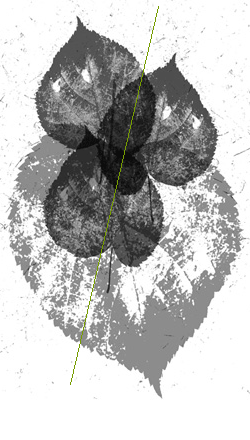The Second Coming
soprano, tenor, clarinet, percussion, piano, violin, and cello
[a setting of The Second Coming by W. B. Yeats]
Listen:
Audio clip: Adobe Flash Player (version 9 or above) is required to play this audio clip. Download the latest version here. You also need to have JavaScript enabled in your browser.
Recording: Cynthia Reinhardt, soprano; James Brown, tenor; Aaron Packard, violin; Katie Schlaikjer, cello; Alicia Bennett, clarinet; Staffan Sandström, piano; Michael McCurdy, percussion; Philip Lenberg, conductor (recorded live at Stony Brook University’s Staller Center for the Arts, May 5, 2005)
Click here to see sample pages of The Second Coming.
Duration: ca. 11’0″
Composed: 1993, revised 2001
As much as the work itself, William Butler Yeats’ vision of time and history inspired my setting of his poem titled “The Second Coming.” His philosophy on these subjects can be represented by the image of two interlocking cones (which he refers to as “gyres”): the tip of each forms the centerpoint of the base of other, and the length of each cone symbolizes a span of 2000 years. Time itself moves in an ever-widening spiral from tip to base; once at the edge of the base, the spiral begins to tighten as time whirls towards the centerpoint. The arrival at this point signifies the turning of the millennium, which Yeats believes to be a time of complete reversal of “good” and “evil”… a time during which “…The best lack all conviction, while the worst/ Are full of passionate intensity…” Once having reached this point, time begins to spiral in the opposite direction, following the shape of the second cone, and the 2000-year cycle of moral inversion continues.
“The Second Coming” by W.B. Yeats is set to music by permission of A.P. Watt, Ltd. on behalf of Anne and Michael Yeats.
The Second Coming was first performed on March 2, 1993 at the Middlebury College Concert Hall in Middlebury, Vermont. The premiere was part of a residency with the contemporary music ensemble Aequalis: Elizabeth Mohr, violoncello; Sandra Hebert, piano; and Michael Parola, percussion. They were joined by Chelsea Dippel, soprano; Edward Lovett, baritone; Branigan Sherman, clarinet; and Jennifer Lewin, violin. I revised the piece in 2001. The Second Coming is dedicated to James Grant, with great thanks.
The Second Coming
Turning and turning in the widening gyre
The falcon cannot hear the falconer;
Things fall apart; the centre cannot hold;
Mere anarchy is loosed upon the world,
The blood-dimmed tide is loosed, and everywhere
The ceremony of innocence is drowned;
The best lack all conviction, while the worst
Are full of passionate intensity.
Surely some revelation is at hand;
Surely the Second Coming is at hand.
The Second Coming! Hardly are those words out
When a vast image out of Spiritus Mundi
Troubles my sight: somewhere in sands of the desert
A shape with lion body and the head of a man,
A gaze blank and pitiless as the sun,
Is moving its slow thighs, while all about it
Reel shadows of the indignant desert birds,
The darkness drops again; but now I know
That twenty centuries of stony sleep
Were vexed to nightmare by a rocking cradle,
And what rough beast, its hour come round at last,
Slouches towards Bethlehem to be born?
—William Butler Yeats (1929)
